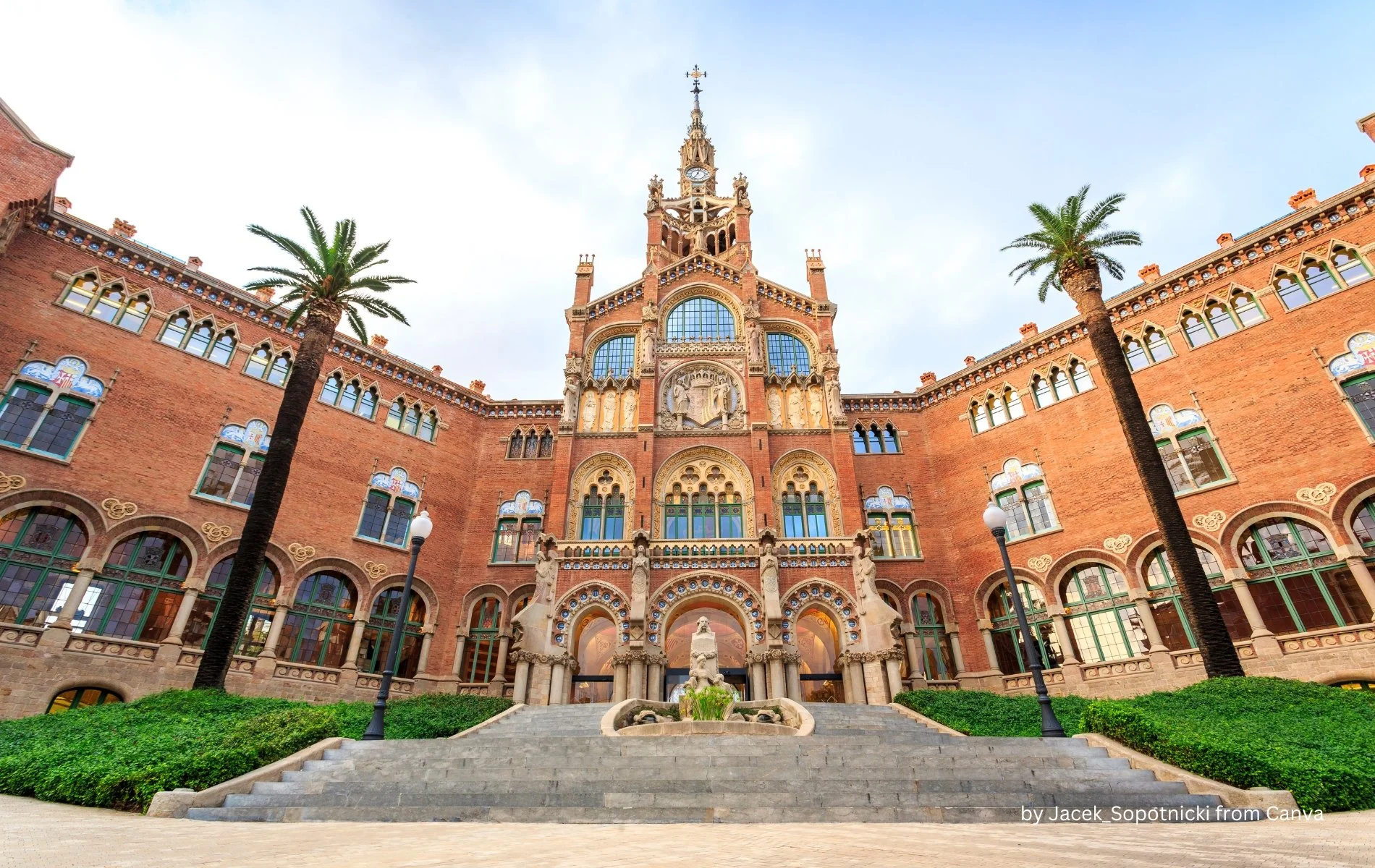Goethermal applications in Sant Pau Hospital in Barcelona
Overview
The Sant Creu i Sant Pau Hospital, originated as a welfare house nearly 600 years ago, was turned into a modernist hospital complex between 1905 and 1930 by architect Lluis Domenech i Montaner. Owned by the Fundació Privada Hospital de la Santa Creu i Sant Pau, the hospital was recognised as a UNESCO Worl Heritage Site for its architectural uniqueness in 1997. The complex can be understood as a "city within a city”: extending over 13.5 hectares (occupying 9 blocks in Barcelona’s Eixample district), with a total space of 44 280 m2 and 19 buildings, connected by 1km of tunnels. The Modernist Sant Pau Hospital is the largest geothermal project in southern Europe and one of the largest in Europe overall.
The installation of this project was carried out Sacyr Ingeniería e Infraestructuras, which used a variety of different equipment and geothermal capture methods. The project comprises an intricate network of 357 wells, each delving deep into the earth's crust to harness the natural warmth below. These wells, extending over 100 to 120 meters deep, serve as the backbone of Sant Pau's innovative heating system, providing sustainable and balanced energy. It is estimated that this project results in a general savings of 4 244 MWh per year and minimises the emission of CO2 by 486 tons per year.
In 2009, the Fundació Privada Hospital de la Santa Creu i Sant Pau announced it would be carrying out rehabilitation of the UNESCO World Heritage Site, in order to include residence for a variety of international and research organisations. One of the main reasons for refurbishment included updating the energy consumption of the complex to make it more sustainable and energy efficient.
Investment history
In October 2016, the fourth phase of the undertaking was completed. IDAE, Instituto para la Diversificación y el Ahorro de la Energía, made a maximum investment of 4.9 million euros, of which 4.17 million were used.
Technical aspects
The geothermal project chosen was a shallow or low-temperature geothermal system of high efficiency to meet heating and cooling needs in different spaces. The installation included vertical exchangers, underground technical rooms, independent systems for buildings, partial sectorizations, and a general ring of installations controlled by a centralised control system. Each building has its own GHPs that provide heating and cooling to the terminal units through four-pipe systems through water-water geothermal heat pumps. The geothermal system is complemented with a radiant floor (using wood fibre panels to insulate) as the final emitter.
In total, the system consists of 17 geothermal heat pumps, and amounts to a total of 3 672 kW of power generated from this system.
Summary
Depth of drilling: 120 m
Total length of wells: 42.8 km
Geothermal power: 3.67 MW
Temperature of the water drawn: ~10 to 15 degrees Celsius
Units covered: 14 buildings
Total amount of investments: €4,170,648 (IDAE)
CO2 emissions avoided: 486 tons of CO2 emission per year
Savings in customers’ bills: Since the commissioning of the restauration, it is estimated that the facilities will have a savings of roughly 4,200 MWh/year.

